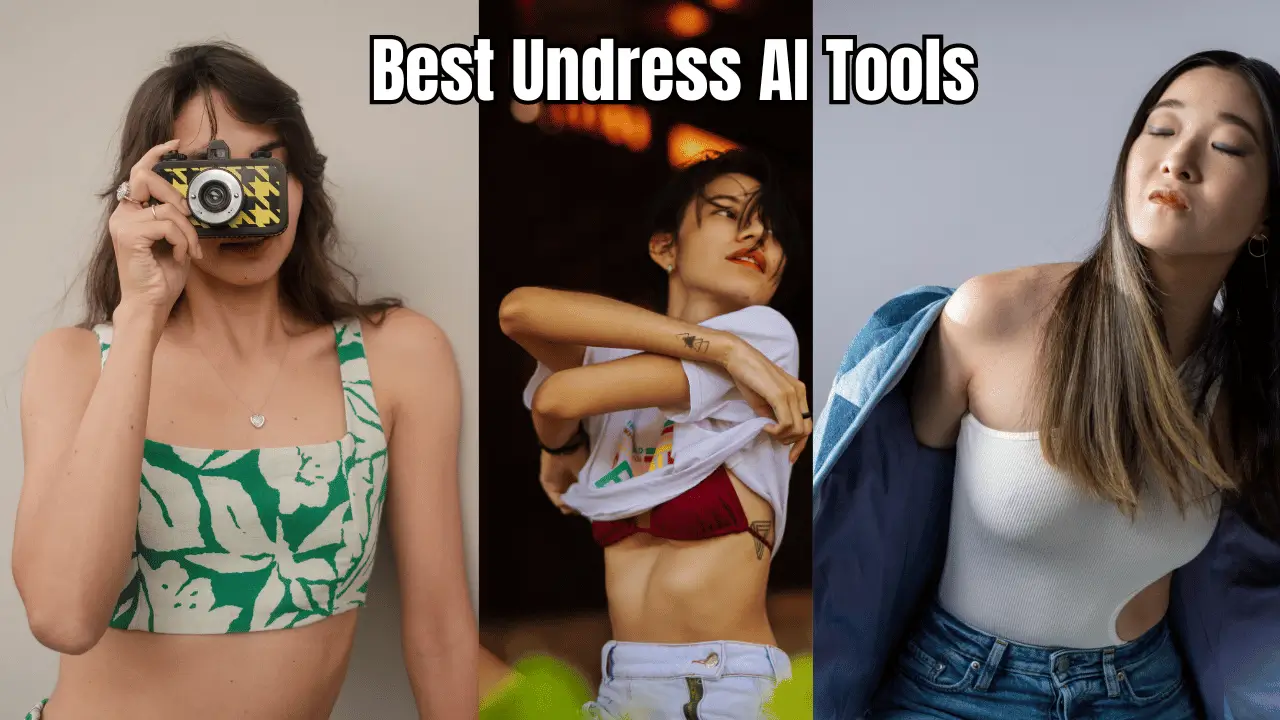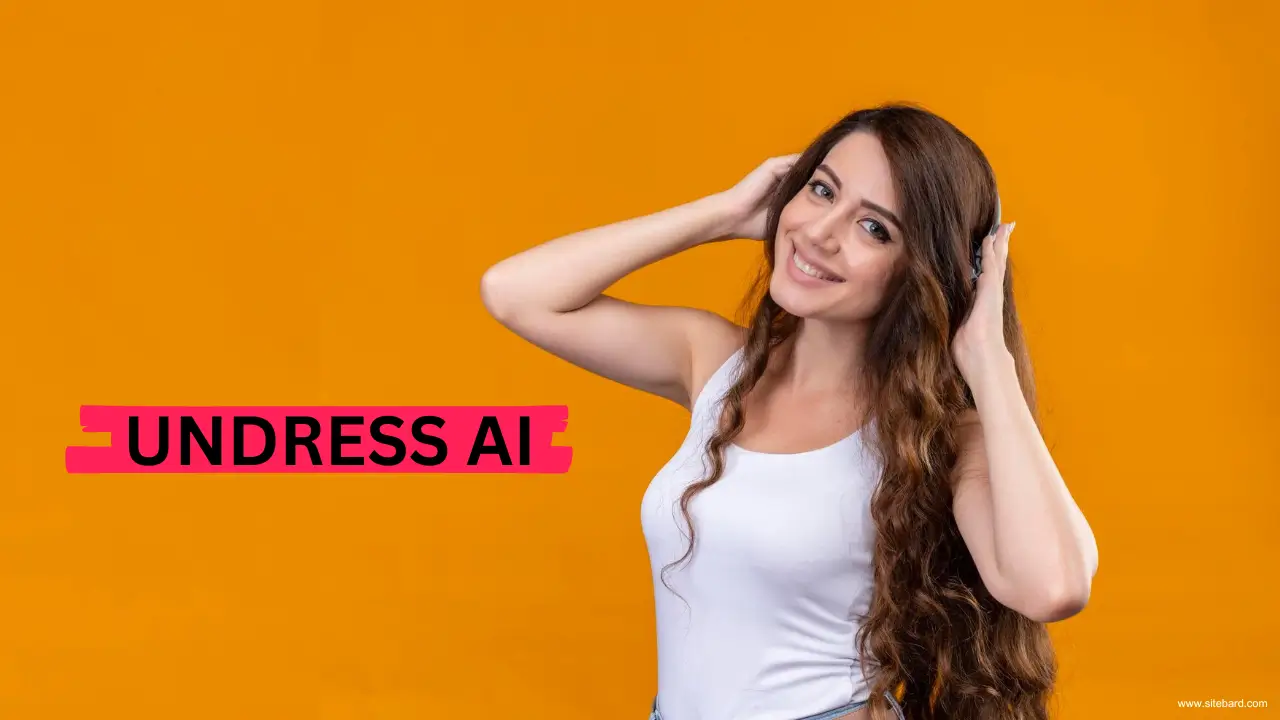AI Clothes Remover: The Future Of Photo Editing? Unveiled!
Ever imagined altering a photograph with just a few clicks, stripping away garments as easily as changing a filter? The rise of AI-powered tools capable of digitally removing clothing from images is no longer a futuristic fantasy but a present-day reality. These technologies, while innovative, spark crucial conversations about ethics, privacy, and the evolving landscape of digital manipulation.
The technology behind AI clothes removers stems from sophisticated artificial intelligence algorithms, often employing deep learning models like Generative Adversarial Networks (GANs) and stable diffusion techniques. These models analyze images, identify clothing, and then generate realistic renditions of the image without the specified garments. The process involves complex computations, understanding human anatomy, and realistically simulating lighting and skin textures. Platforms like Myimg, Undress AI, and Clothoff.io boast user-friendly interfaces that allow even novice users to achieve seemingly impossible results with minimal technical know-how. The draw is undeniable: instant image transformation, readily available at your fingertips.
| Feature | Description |
|---|---|
| Technology | Employs AI algorithms, including GANs and stable diffusion, to digitally remove clothing from images. |
| Functionality | Analyzes images, identifies clothing, and generates realistic renditions without the garments. |
| User Interface | Platforms like Myimg, Undress AI, and Clothoff.io offer user-friendly interfaces for easy use. |
| Accessibility | Many tools are available online, with some offered for free. |
| Applications | Potentially useful in fashion design, entertainment, and healthcare, but raises ethical concerns. |
| Ethical Concerns | Raises questions regarding privacy, consent, and the potential for misuse. |
| References | Example AI Resource Website |
The user experience is often streamlined for simplicity. Typically, users upload an image to the platform. Some tools allow for specifying preferences, like desired styles or adjustments to skin texture. The AI then processes the image, removing the clothes based on its algorithmic understanding and potentially replacing the removed garments with digitally generated skin or other stylistic elements. For instance, platforms highlight the ability to refine the generated images by smoothing skin texture or removing imperfections, offering a degree of post-processing control.
- Brittany Marcelino Love After Lockup Still Together In 2025
- Desi Xxx Guide Indian Sex Sites Videos Updated
The array of these tools available online is quite broad. Some platforms, like Anieraser's AI clothes remover and Openart AI, are explicitly marketed for this purpose. Others, like Ptool, market their AI clothes remover as part of a larger suite of image editing capabilities. The accessibility of these toolsmany of them freecontributes to their growing popularity. However, the proliferation of free "undress AI" tools raises significant questions about data security, user privacy, and the potential for misuse.
Consider Clothoff.io, for example. It allows users to input character descriptions including gender, body type, and desired pose to generate unique images. The flexibility of these tools extends beyond simply removing clothing; they offer a degree of creative control over the generated image. The problem arises when these capabilities are not employed responsibly or ethically.
The application of AI clothes removers cuts across several industries. In fashion, designers might use these tools to visualize clothing designs on different body types or to experiment with various styles without physical models. The entertainment industry could employ the technology for digital art, special effects, or even to create realistic avatars for gaming. Hypothetically, in the healthcare sector, such technologies could be used for anatomical visualization or for training purposes, although this is a highly sensitive area that requires strict ethical oversight. However, such potential benefits are often overshadowed by the significant ethical and moral concerns that surround the core functionality of these applications.
- Who Is Jameliz Smith Discover The Tiktok Stars Rise To Fame
- Sophie Rain On Telegram Find Her Official Channel Year Guide
One of the primary ethical concerns is the issue of consent. An AI tool capable of removing clothing from an image can easily be used to create non-consensual imagery. The potential for misuse and abuse is significant. Imagine someone using the technology to digitally strip away clothing from photos of acquaintances, celebrities, or even strangers found online. This can lead to harassment, humiliation, and potentially even blackmail. The victim may never even know the image exists, let alone have the opportunity to object to its creation or dissemination.
The lack of regulation surrounding AI clothes removers exacerbates these concerns. Many of these tools operate in a legal gray area, and it is often unclear who is responsible when the technology is misused. The platforms themselves may disclaim responsibility, arguing that they are simply providing a tool and that the users are responsible for how it is used. However, critics argue that these platforms have a moral and ethical obligation to prevent their technology from being used for malicious purposes.
Further complicating the issue is the sophistication of the technology itself. Deep learning models like GANs are capable of generating extremely realistic images, making it difficult to distinguish between real and AI-generated content. This creates a "reality blurring" effect, where it becomes increasingly challenging to verify the authenticity of images and videos. The consequences of this can be far-reaching, affecting everything from personal relationships to political discourse.
The argument that these tools are intended for "personal entertainment" or "creative exploration" rings hollow when weighed against the potential for harm. While some users may genuinely use the technology for harmless purposes, the temptation to misuse it for malicious ends is simply too great. The ease with which these tools can be used, combined with the lack of oversight, creates a perfect storm for abuse.
The issue of deepfakesAI-generated videos that convincingly mimic real peopleis closely related to the ethical concerns surrounding AI clothes removers. Both technologies have the potential to be used to create deceptive and harmful content. In the case of deepfakes, individuals can be made to say or do things they never actually said or did. With AI clothes removers, they can be digitally stripped naked without their consent. Both technologies represent a significant threat to individual privacy and autonomy.
The use of AI clothes removers can also perpetuate harmful stereotypes and objectify individuals. By reducing people to their physical appearance and stripping away their clothing, these tools contribute to a culture of hypersexualization and body shaming. This is particularly harmful to women and girls, who are already disproportionately affected by unrealistic beauty standards and societal pressure to conform to certain physical ideals.
One might argue that the artistic merit of these technologies should be considered. However, the "artistic" argument often fails to account for the power dynamics involved. Creating an image that digitally undresses someone is not simply a matter of artistic expression; it is an exercise of power over that individual. The person in the image has no control over how they are portrayed, and the image can be used to humiliate, objectify, or even threaten them.
The potential legal ramifications of using AI clothes removers are also significant. Depending on the jurisdiction, creating or distributing non-consensual sexually explicit images may be a criminal offense. Civil lawsuits for defamation, invasion of privacy, or intentional infliction of emotional distress may also be possible. However, the legal landscape is still evolving, and it is often unclear how existing laws apply to these new technologies. The legal battles surrounding deepfakes and similar technologies offer a glimpse into the potential challenges of regulating AI-generated content.
The argument for freedom of speech also fails to justify the use of AI clothes removers. While freedom of speech is a fundamental right, it is not absolute. There are certain categories of speech, such as defamation, incitement to violence, and child pornography, that are not protected by the First Amendment in the United States, for example. Similarly, the right to express oneself does not extend to creating and disseminating images that violate the privacy or dignity of others.
Moreover, the anonymity afforded by the internet can make it difficult to track down and prosecute individuals who misuse AI clothes removers. Many of these tools are hosted on servers located in countries with weak or non-existent laws regarding online content. Even if the perpetrator is identified, extradition may be difficult or impossible. This makes it challenging to hold individuals accountable for their actions and further emboldens those who would use the technology for malicious purposes.
The platforms that host AI clothes removers have a responsibility to implement safeguards to prevent misuse. This could include requiring users to verify their identity, implementing filters to prevent the creation of non-consensual imagery, and cooperating with law enforcement investigations. However, many platforms are reluctant to implement such measures, fearing that it will stifle innovation or drive users to competing platforms.
Education is also crucial in combating the misuse of AI clothes removers. Individuals need to be aware of the potential risks and harms associated with the technology. They also need to be educated about their rights and how to report instances of abuse. Schools, community organizations, and government agencies can all play a role in raising awareness and promoting responsible use of AI.
The conversation surrounding AI clothes removers also highlights the need for a broader discussion about the ethics of artificial intelligence. As AI technologies become more powerful and pervasive, it is increasingly important to consider the potential social and ethical implications. This includes developing ethical guidelines for AI development, promoting transparency and accountability, and ensuring that AI is used in a way that benefits all of humanity.
One potential solution is to develop "AI ethics audits," which would assess the potential risks and harms associated with AI technologies before they are released to the public. These audits could be conducted by independent experts and would provide a valuable check on the development and deployment of AI. Such audits would help to identify potential biases, ensure that the technology is used in a responsible manner, and mitigate the risk of unintended consequences.
Another approach is to develop "AI literacy" programs that teach individuals how to critically evaluate AI-generated content. This would help people to distinguish between real and fake images and videos and to avoid falling victim to scams or misinformation. AI literacy is becoming increasingly important in a world where AI is playing an ever-larger role in our lives.
The use of watermarks or digital signatures on AI-generated content is another potential way to combat misuse. This would make it easier to identify AI-generated images and videos and to hold individuals accountable for their actions. However, watermarks and digital signatures can be easily removed or circumvented, so they are not a foolproof solution.
It is also important to foster a culture of respect and consent online. This includes promoting positive online behavior, encouraging individuals to report instances of abuse, and holding perpetrators accountable for their actions. A culture of respect and consent is essential for creating a safe and welcoming online environment for all.
The development of AI clothes removers is just one example of the rapid advancements in artificial intelligence. As AI technologies continue to evolve, it is crucial to address the ethical and societal implications proactively. This requires a multi-faceted approach that includes regulation, education, and ethical guidelines. Failure to do so could have dire consequences for individual privacy, autonomy, and social well-being. The power to digitally remove clothing from images is a potent one, and it must be wielded with utmost care and responsibility.
The functionality offered by Undress AI, for instance, illustrates the advancements. It purports to provide an online service that utilizes sophisticated artificial intelligence for image transformation. It employs deep learning algorithms, including models like stable diffusion and generative adversarial networks (GANs), to digitally generate versions of uploaded images where clothing appears realistically removed by the AI. Users can upload their photos, select a preferred style, and the AI will process the image quickly and accurately. But the very existence of such a service underscores the need for heightened ethical consideration.
Similarly, the claim that one can "remove clothes from anybody with Undress AI with two clicks!" is a stark reminder of the ease with which such technology can be misused. While the service may claim to be for personal entertainment or professional needs, the potential for abuse remains a significant concern. It calls into question the responsibility of AI developers and platform providers to ensure their technology is not used to violate privacy or create non-consensual imagery.
The availability of apps that claim to introduce "revolutionary technology that utilizes artificial intelligence to digitally remove clothing from images," as seen with AI clothes remover apps, further highlights the proliferation of these technologies. While proponents might argue that such apps offer "a new level of creativity and exploration in photography and digital art," the ethical implications cannot be ignored. The potential for misuse far outweighs the claimed benefits.
The statement that "Laden sie einfach ein bild hoch und entfernen sie die kleidung mit nur einem klick," highlighting the ease of use in another language, reinforces the accessibility of these tools. The additional claim that it "Er kann im kreativen design, in der modebranche oder zur persnlichen unterhaltung verwendet werden," attempts to justify the technology's existence, but does little to address the underlying ethical issues.
While some might argue that "a feature of this function and methods of achieving the desired result is the professional skills of our retouchers," emphasizing the human element, it does not negate the fact that the initial removal of clothing is performed by AI. The reliance on "understanding of the anatomy of the human body, the ability to see the perspective of the location of the body in space, taking into account lighting, including darkening and light sources," further underscores the complexity of the technology and its potential for creating realistic but ultimately fabricated images.
The increasing popularity of "free AI clothes remover websites" is a double-edged sword. While it makes the technology accessible to a wider audience, it also increases the risk of misuse. The claim that these tools allow users to "easily and quickly remove clothes from photos online" is a stark reminder of the potential for abuse and the need for greater regulation.
The statement that "Clothoff AI technology allows you to effortlessly eliminate unwanted clothing elements, giving you more control over your photos" highlights the perceived benefits of the technology. However, this "control" can easily be used to create harmful and unethical content. The ability to "just input character descriptions like gender, body type, remove cloth, pose etc in the prompt box, and Clothoff AI generator will automatically render unique images based on your prompts" is a recipe for potential abuse and the creation of non-consensual imagery.
The fundamental definition of "undress AI" as "artificial intelligence algorithms that can digitally remove clothing from images of people" is straightforward. However, it fails to capture the ethical complexities and potential harms associated with the technology. The assertion that this is an "innovative technology" needs to be tempered with a clear understanding of the potential risks and the need for responsible development and use.
The fact that "numerous undress applications can be found on the internet, and some of them are offered without charge" underscores the widespread availability of these tools and the potential for widespread misuse. The claim that "at its core, undress AI is designed to analyze images and digitally remove clothing items, revealing the underlying human form with remarkable precision and accuracy" is both impressive and deeply concerning, given the potential for non-consensual applications.
While it is true that the technology "has applications across various industries, including fashion, entertainment, and healthcare," the capabilities also raise "profound ethical questions regarding" privacy, consent, and the potential for misuse. These ethical questions must be addressed before the technology is widely adopted and used.
The claim that "Openart AI offers an AI clothes remover and undressing as part of its suite of generative tools" further emphasizes the integration of this technology into broader AI platforms. This integration makes it even easier for users to access and potentially misuse the technology. The need for responsible development and ethical guidelines becomes even more critical in this context.
- Filmywap Ofilmywap Bollywood Hollywood Movie Download Sites
- Lisa Desjardins Weight Loss Journey What We Know So Far

6 Best and Free Undress AI Tools to Remove Clothes. WishfulThemes

11 Free Undress AI Apps To Remove Clothes From Images

Undress AI Remove Clothes From Images